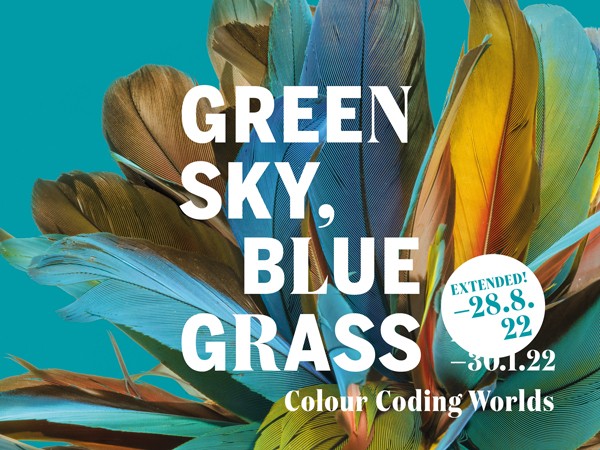
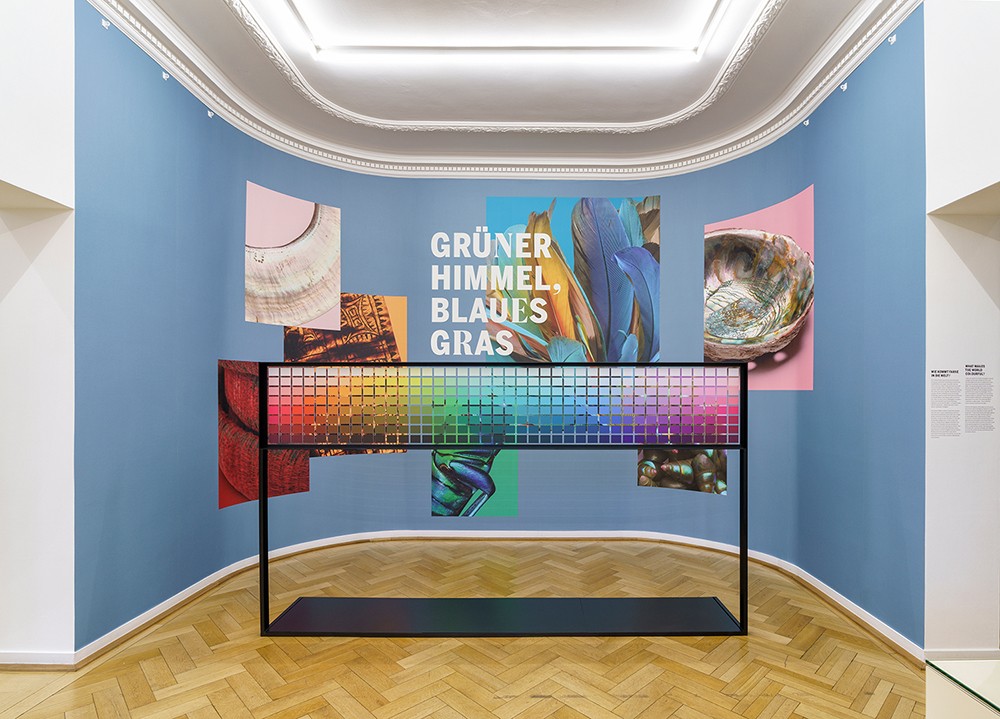 Exhibition view “GREEN SKY, BLUE GRASS. Colour Coding Worlds”. Weltkulturen Museum 2021. Photo: Wolfgang Günzel
Exhibition view “GREEN SKY, BLUE GRASS. Colour Coding Worlds”. Weltkulturen Museum 2021. Photo: Wolfgang Günzel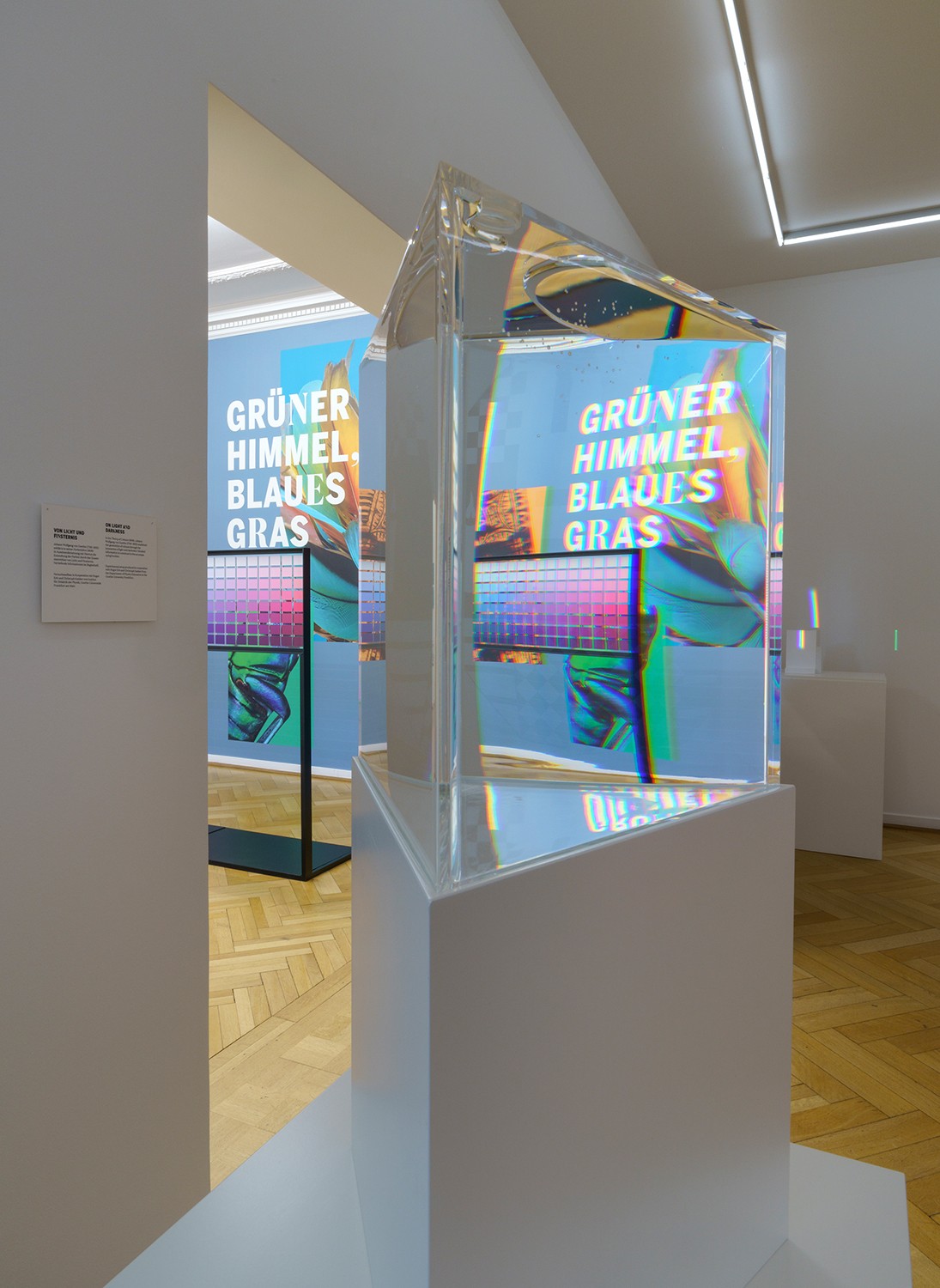 Exhibition view “GREEN SKY, BLUE GRASS. Colour Coding Worlds”. Weltkulturen Museum 2021. Photo: Wolfgang Günzel
Exhibition view “GREEN SKY, BLUE GRASS. Colour Coding Worlds”. Weltkulturen Museum 2021. Photo: Wolfgang Günzel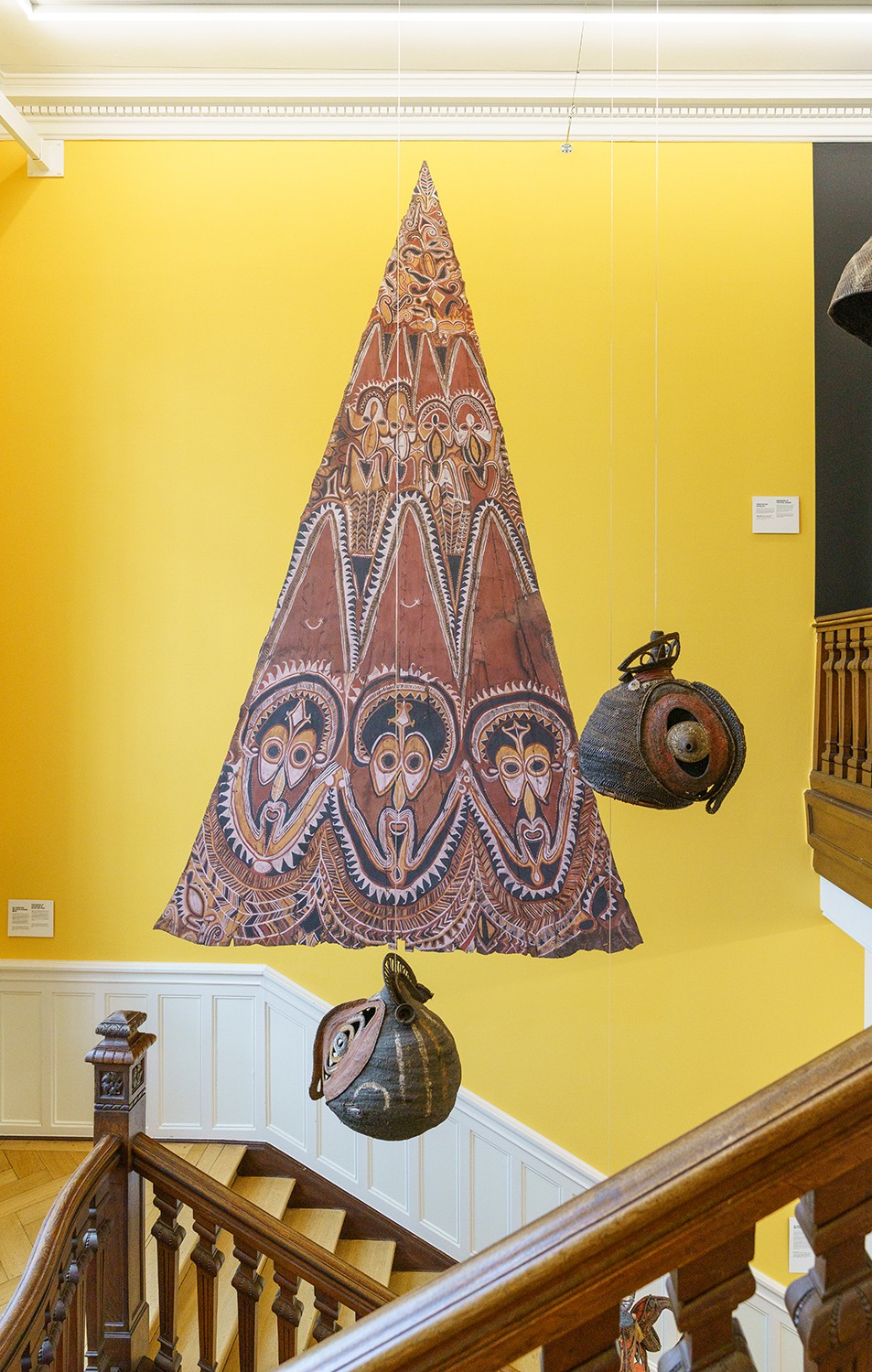 Exhibition view “GREEN SKY, BLUE GRASS. Colour Coding Worlds”. Weltkulturen Museum 2021. Photo: Wolfgang Günzel
Exhibition view “GREEN SKY, BLUE GRASS. Colour Coding Worlds”. Weltkulturen Museum 2021. Photo: Wolfgang Günzel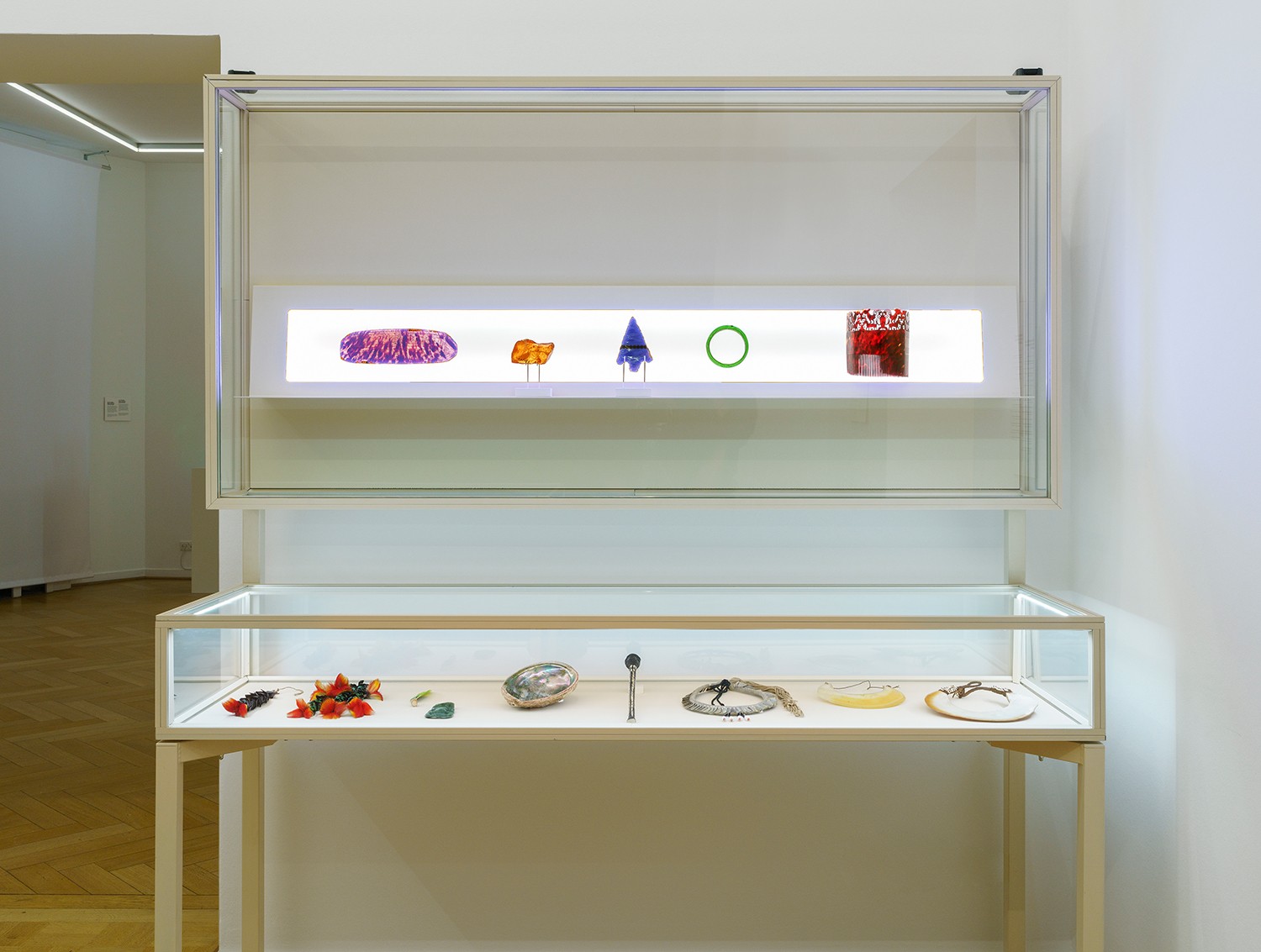 Exhibition view “GREEN SKY, BLUE GRASS. Colour Coding Worlds”. Weltkulturen Museum 2021. Photo: Wolfgang Günzel
Exhibition view “GREEN SKY, BLUE GRASS. Colour Coding Worlds”. Weltkulturen Museum 2021. Photo: Wolfgang Günzel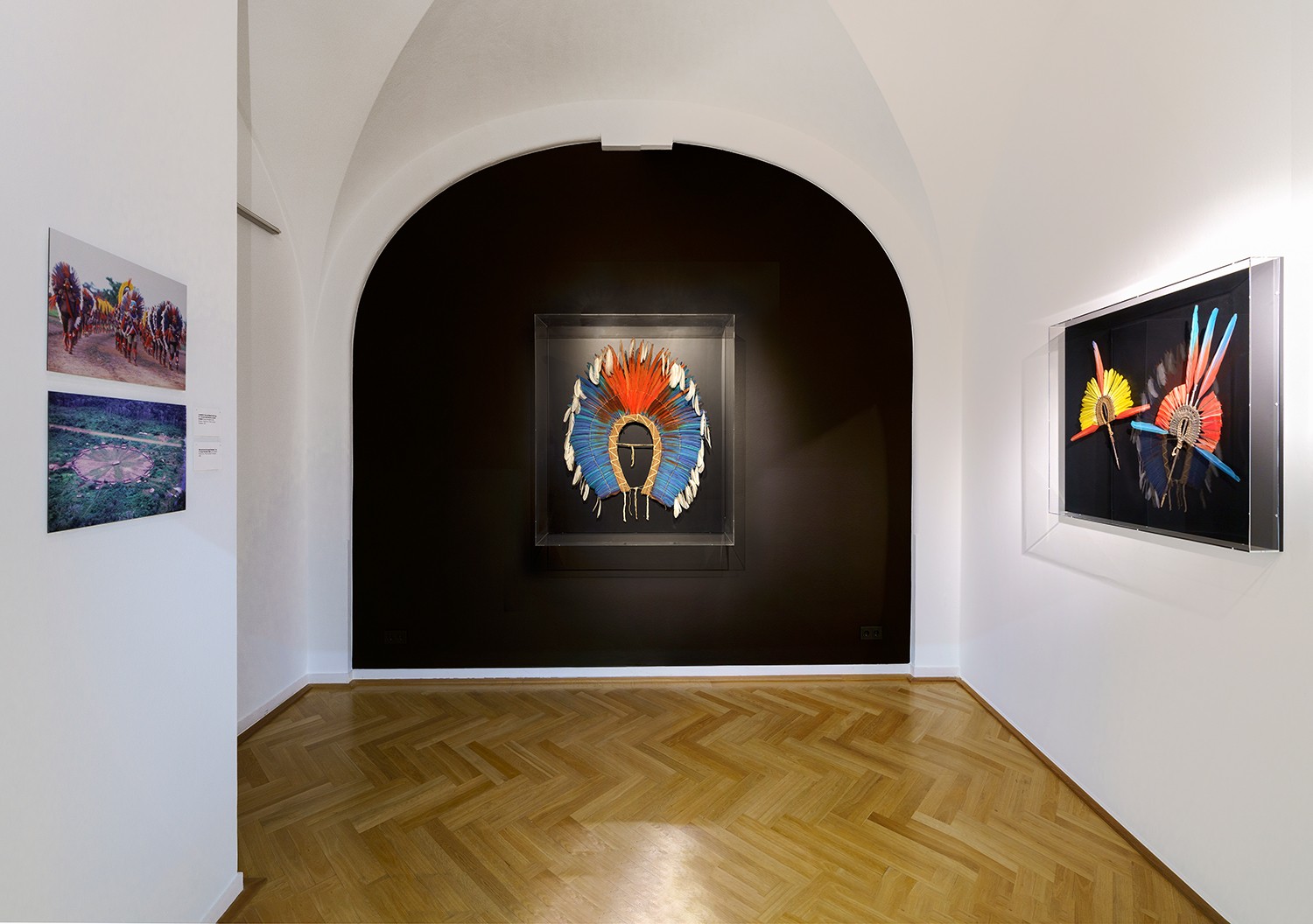 Exhibition view “GREEN SKY, BLUE GRASS. Colour Coding Worlds”. Weltkulturen Museum 2021. Photo: Wolfgang Günzel
Exhibition view “GREEN SKY, BLUE GRASS. Colour Coding Worlds”. Weltkulturen Museum 2021. Photo: Wolfgang Günzel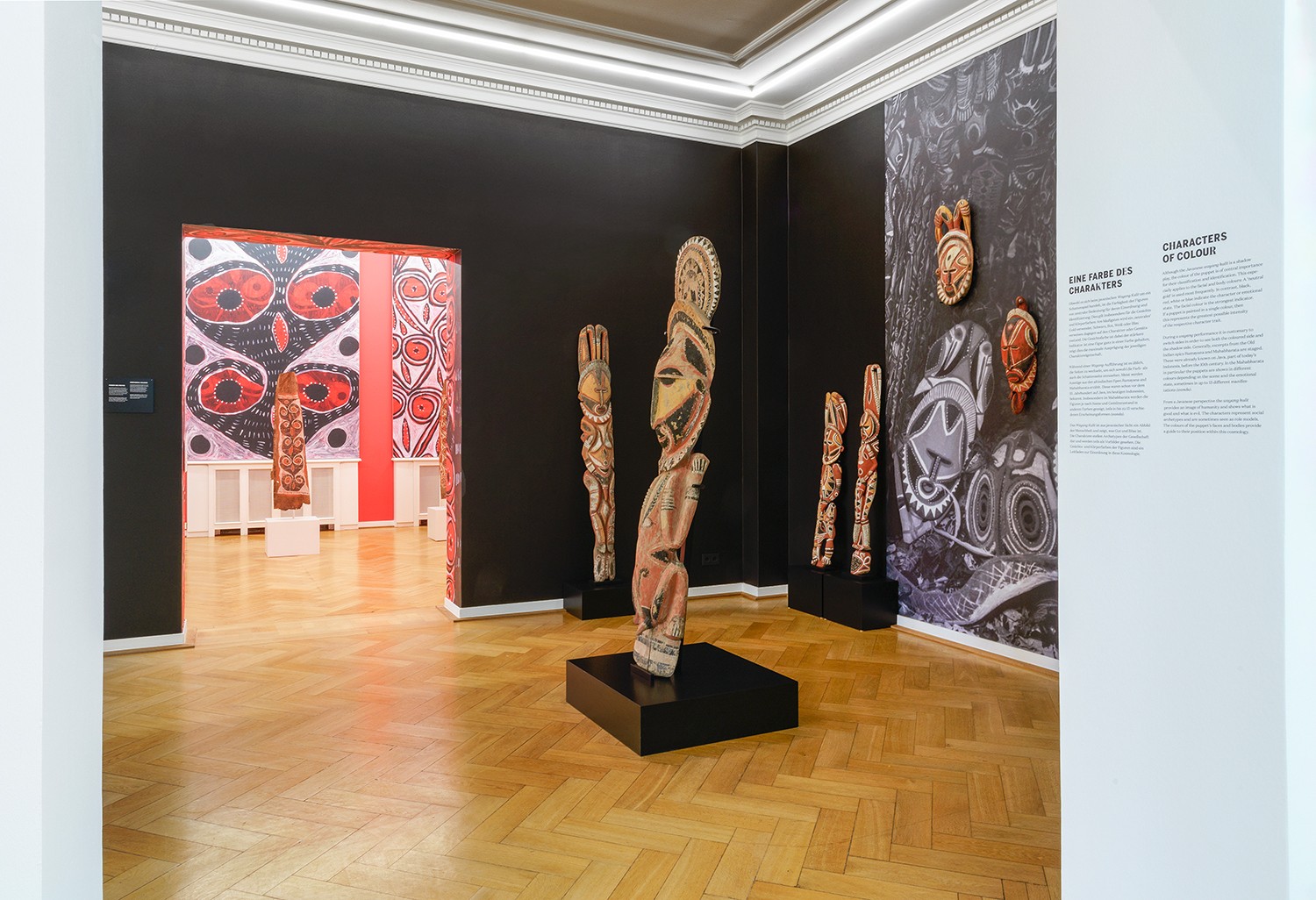 Exhibition view “GREEN SKY, BLUE GRASS. Colour Coding Worlds”. Weltkulturen Museum 2021. Photo: Wolfgang Günzel
Exhibition view “GREEN SKY, BLUE GRASS. Colour Coding Worlds”. Weltkulturen Museum 2021. Photo: Wolfgang Günzel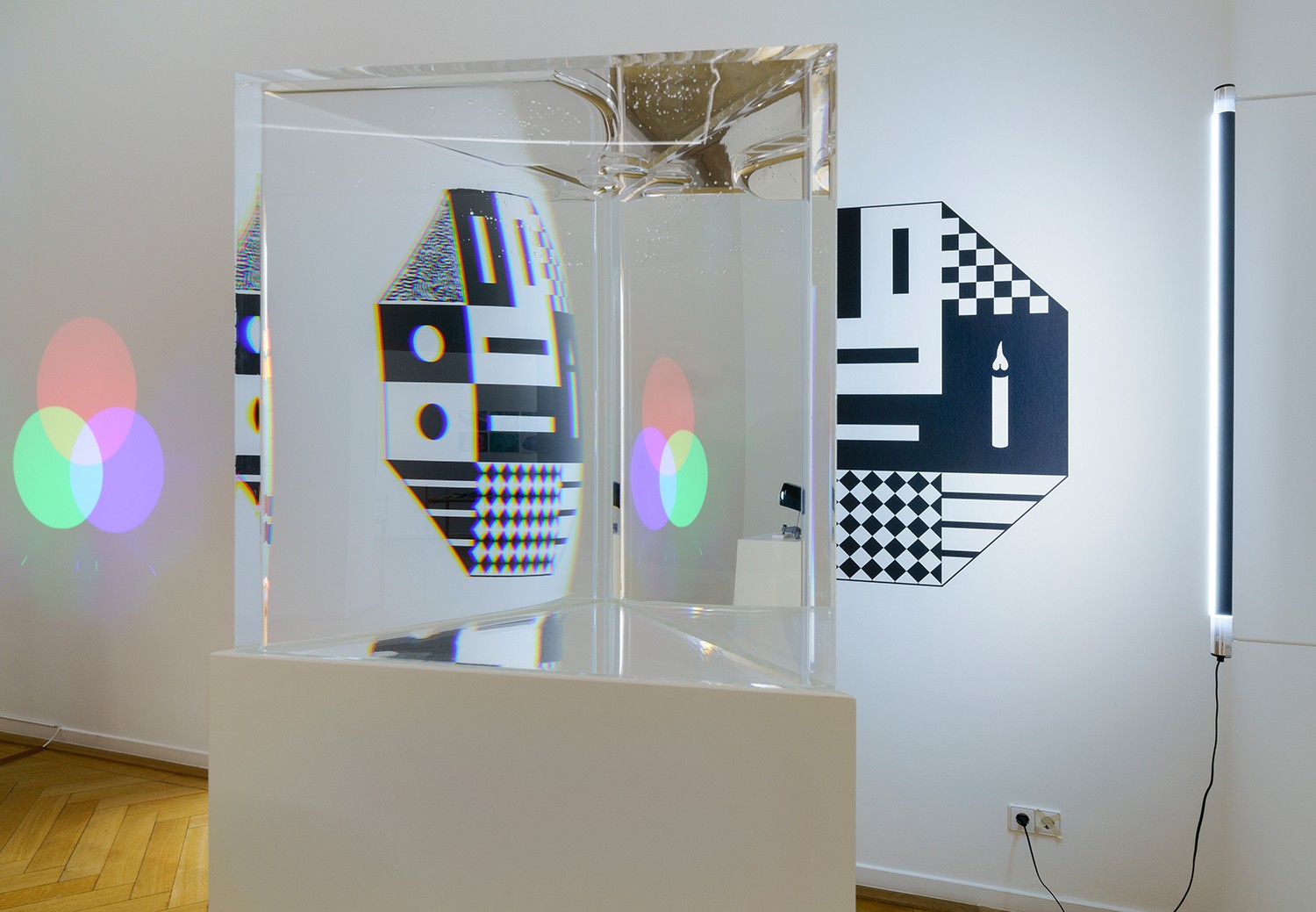 Exhibition view “GREEN SKY, BLUE GRASS. Colour Coding Worlds”. Weltkulturen Museum 2021. Photo: Wolfgang Günzel
Exhibition view “GREEN SKY, BLUE GRASS. Colour Coding Worlds”. Weltkulturen Museum 2021. Photo: Wolfgang Günzel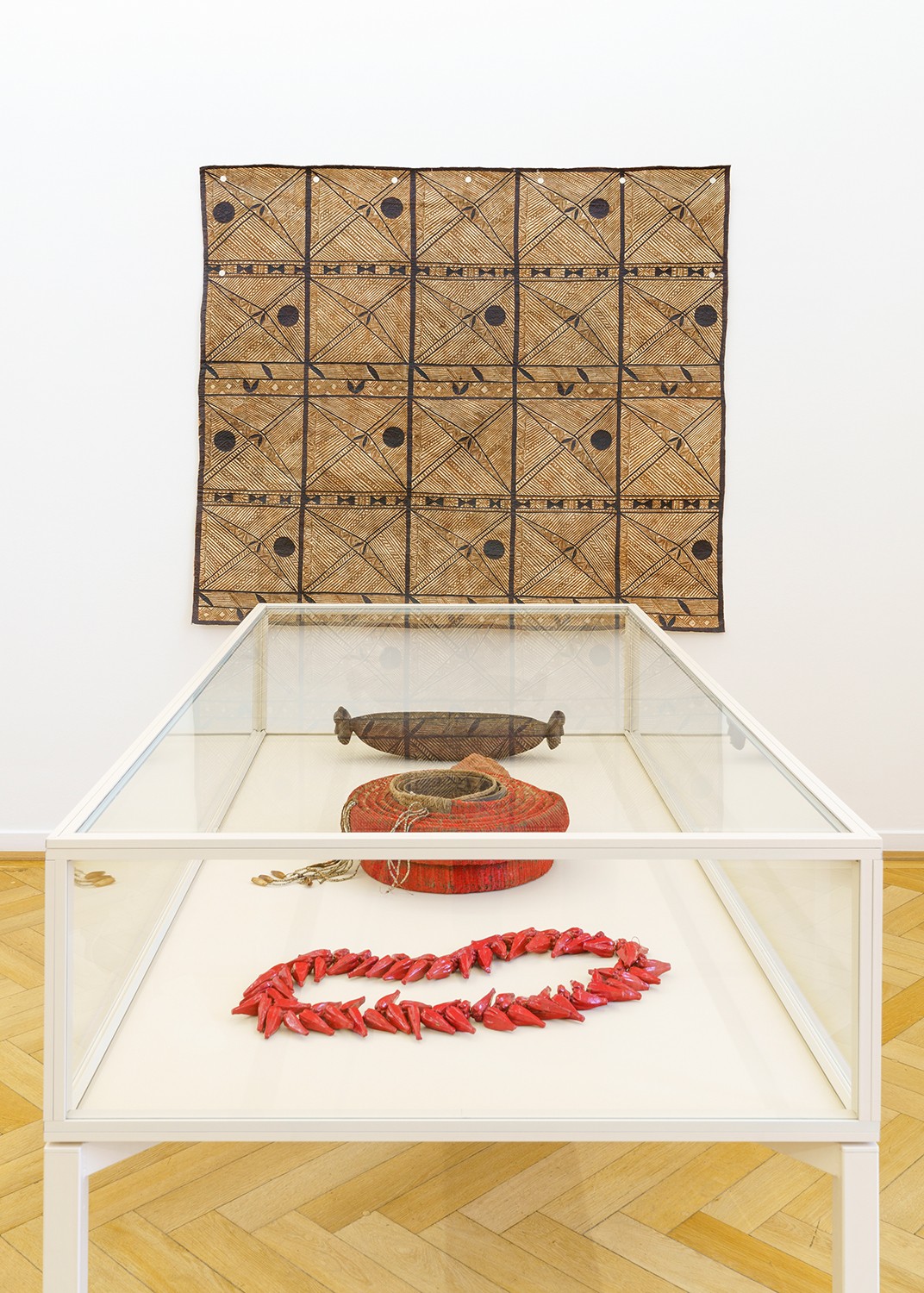 Exhibition view “GREEN SKY, BLUE GRASS. Colour Coding Worlds”. Weltkulturen Museum 2021. Photo: Wolfgang Günzel
Exhibition view “GREEN SKY, BLUE GRASS. Colour Coding Worlds”. Weltkulturen Museum 2021. Photo: Wolfgang Günzel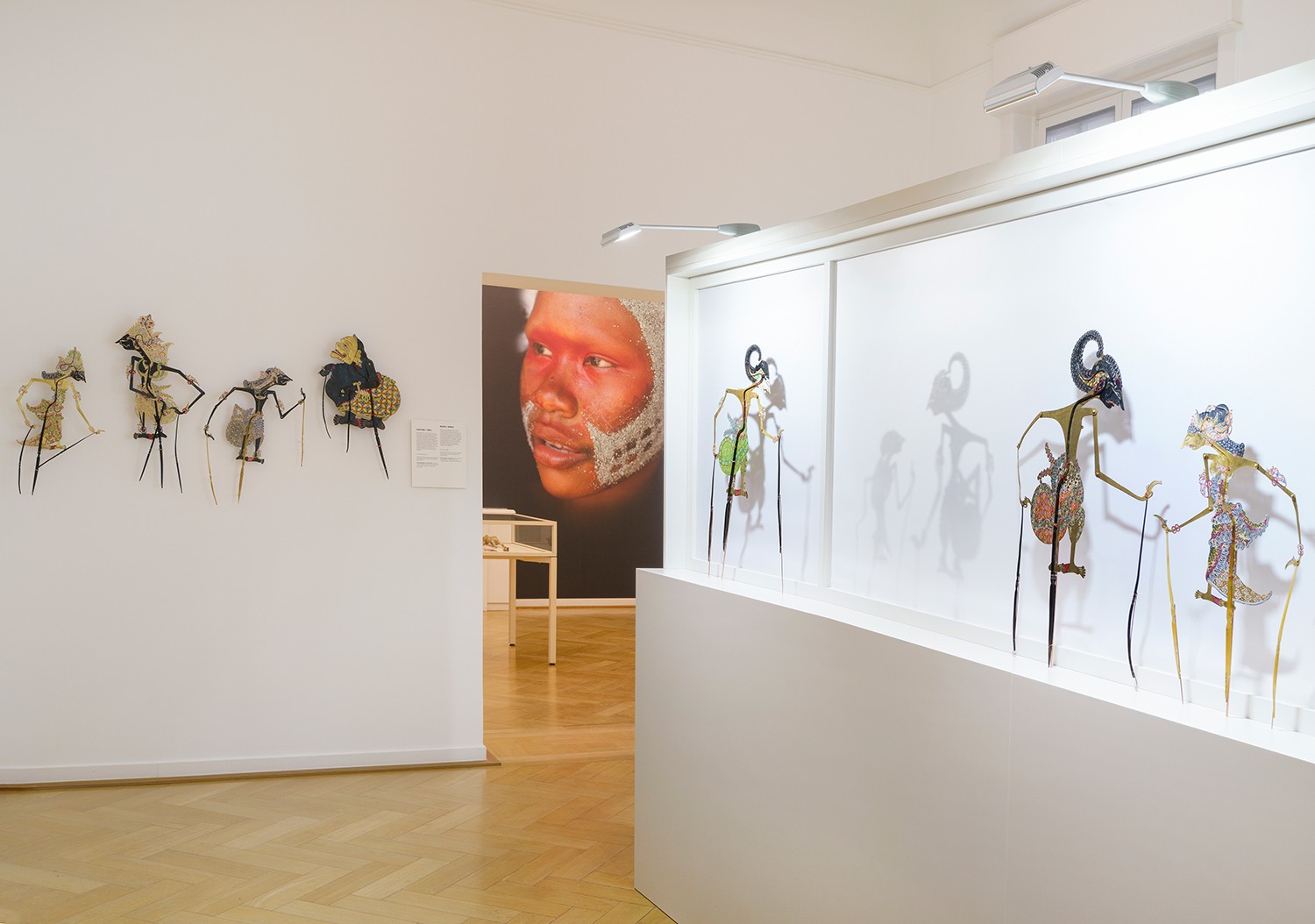 Exhibition view “GREEN SKY, BLUE GRASS. Colour Coding Worlds”. Weltkulturen Museum 2021. Photo: Wolfgang Günzel
Exhibition view “GREEN SKY, BLUE GRASS. Colour Coding Worlds”. Weltkulturen Museum 2021. Photo: Wolfgang Günzel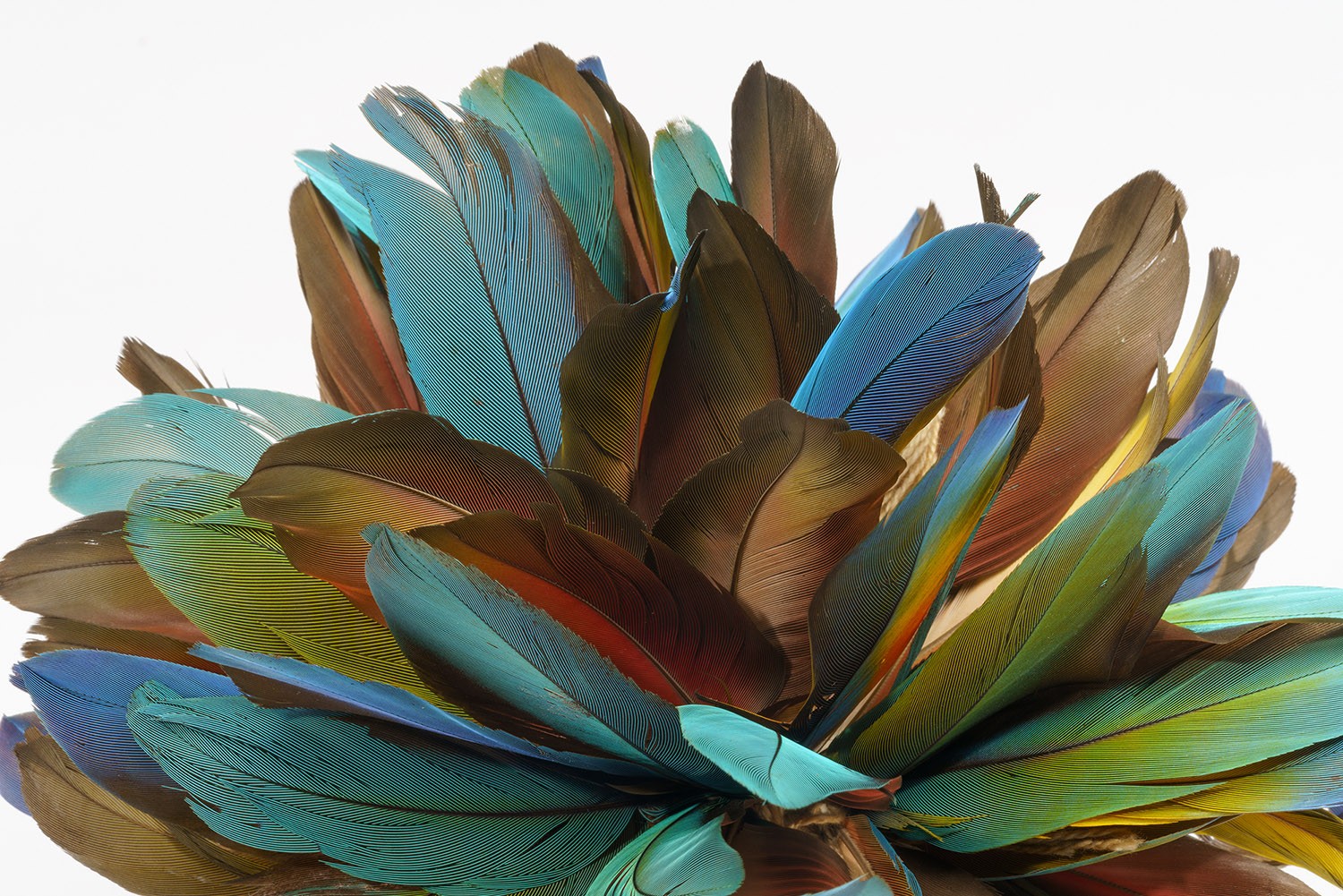 Armlet (detail). Feathers, barkcloth, palm leaves and cotton. Kayapó Txukarramãe, Pará, Brazil. Collected by Luiz Boglar, 1988. Collection Weltkulturen Museum. Photo: Wolfgang Günzel
Armlet (detail). Feathers, barkcloth, palm leaves and cotton. Kayapó Txukarramãe, Pará, Brazil. Collected by Luiz Boglar, 1988. Collection Weltkulturen Museum. Photo: Wolfgang Günzel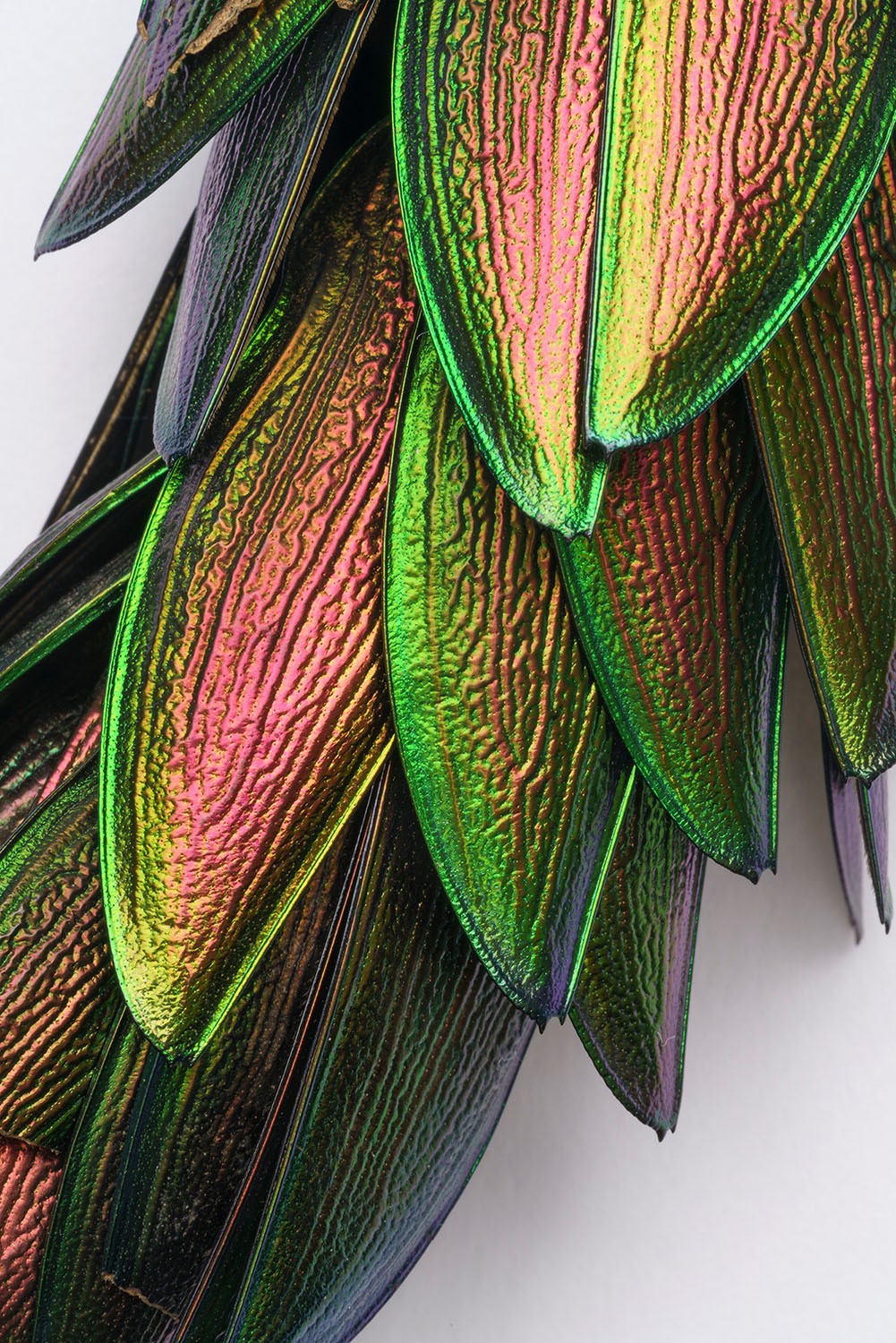 Ear pendant (detail). Beetle wings, feathers. Jíbaro_Shuar, Peru. Collected by Alfred Großmann, 1925-1930. Collection Weltkulturen Museum. Photo: Wolfgang Günzel
Ear pendant (detail). Beetle wings, feathers. Jíbaro_Shuar, Peru. Collected by Alfred Großmann, 1925-1930. Collection Weltkulturen Museum. Photo: Wolfgang Günzel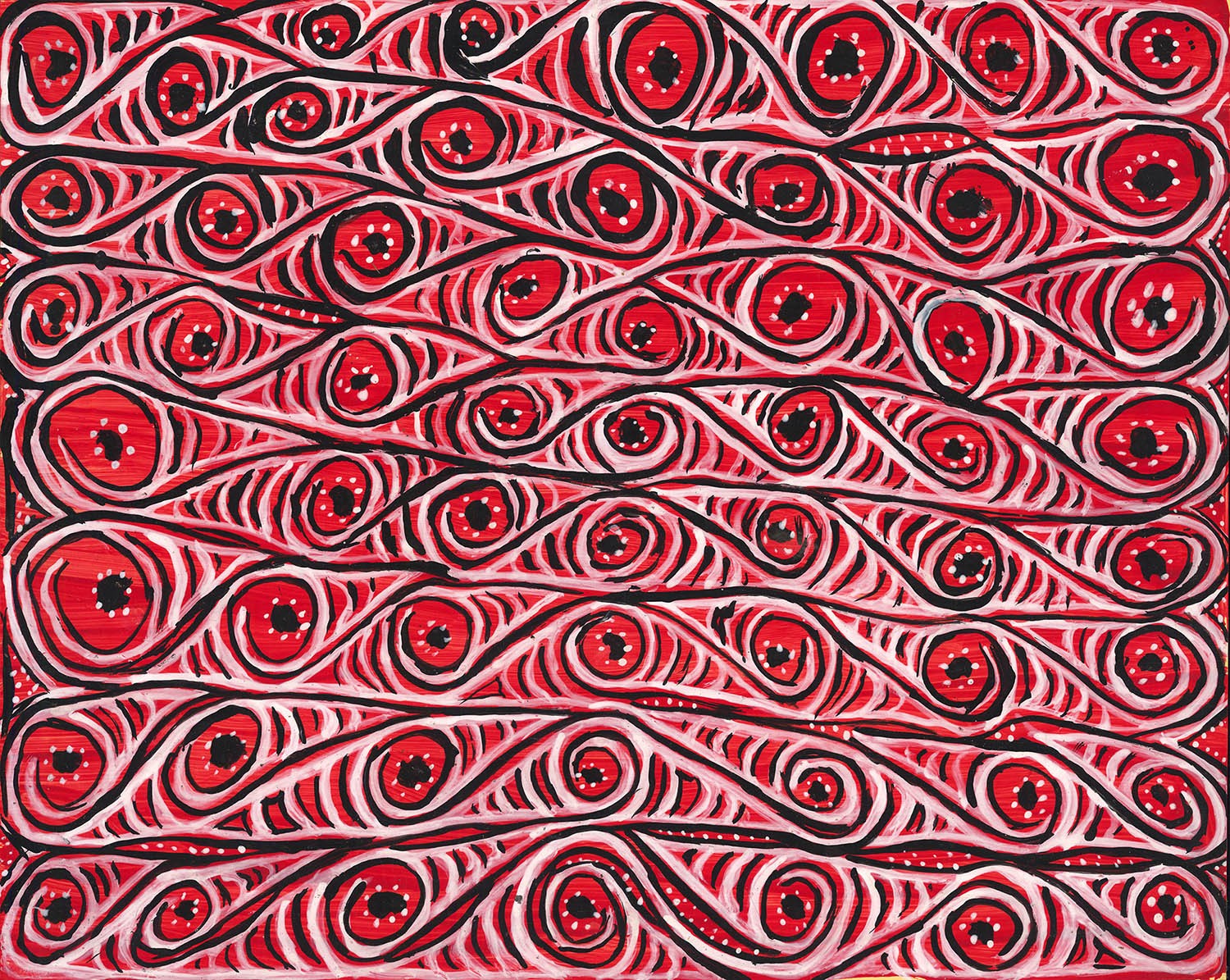 Andrias Aimo, 2019, Etoka Enunga. Acrylic on paper. Avim, Upper Korewori, New Guinea. Collected by Tomi Bartole, 2019. Collection Weltkulturen Museum
Andrias Aimo, 2019, Etoka Enunga. Acrylic on paper. Avim, Upper Korewori, New Guinea. Collected by Tomi Bartole, 2019. Collection Weltkulturen Museum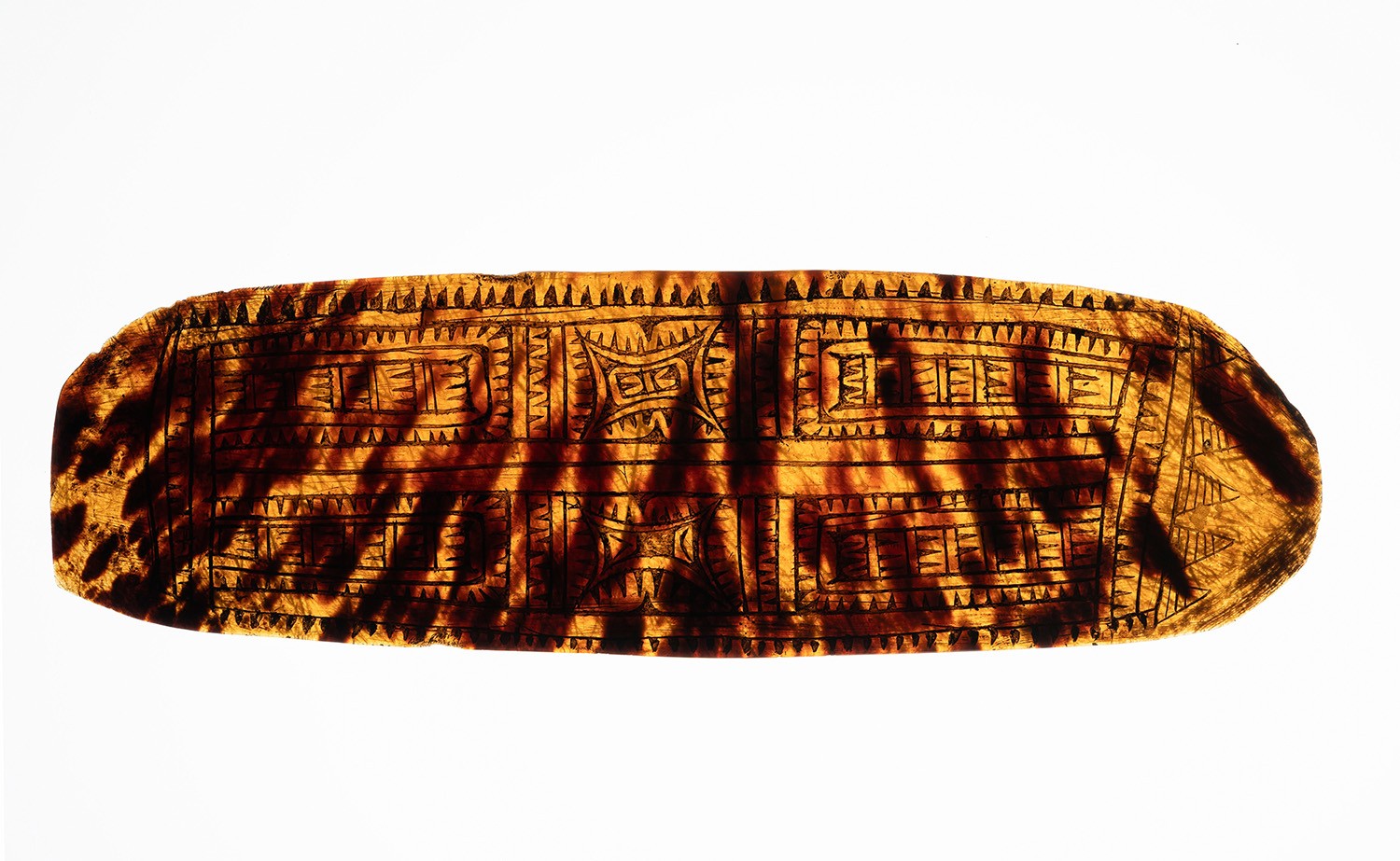 Material for an armband, strip of tortoise shell engraved patterns, Southeast New Guinea, Melanesia. Collection and acquisition unknown. Collection Weltkulturen Museum. Photo Wolfgang Günzel
Material for an armband, strip of tortoise shell engraved patterns, Southeast New Guinea, Melanesia. Collection and acquisition unknown. Collection Weltkulturen Museum. Photo Wolfgang Günzel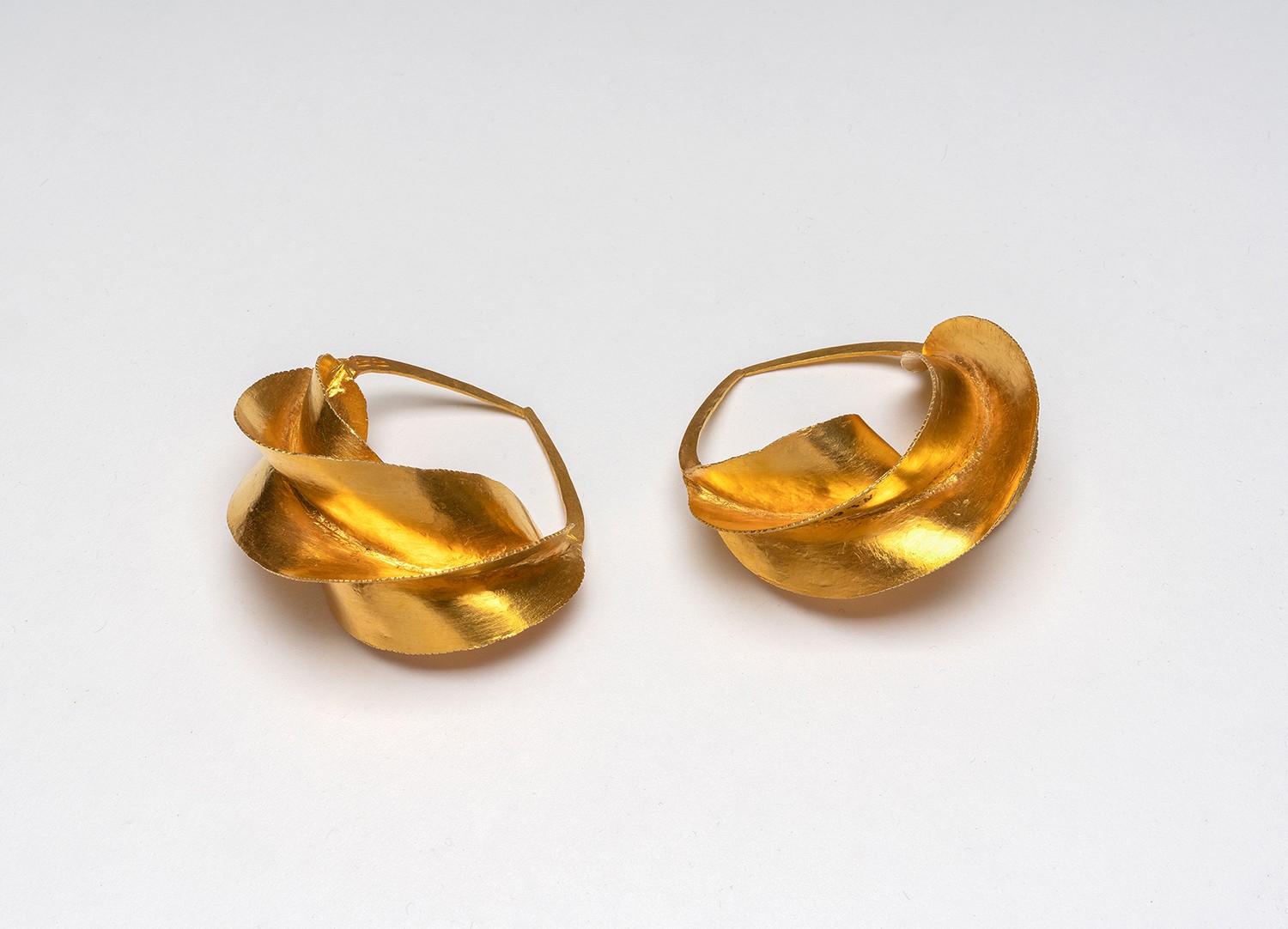 Earrings. Gold. Peulh of Mali, West Africa. Purchased from Thomas Schunk, 1989. Collection Weltkulturen Museum. Photo: Wolfgang Günzel
Earrings. Gold. Peulh of Mali, West Africa. Purchased from Thomas Schunk, 1989. Collection Weltkulturen Museum. Photo: Wolfgang Günzel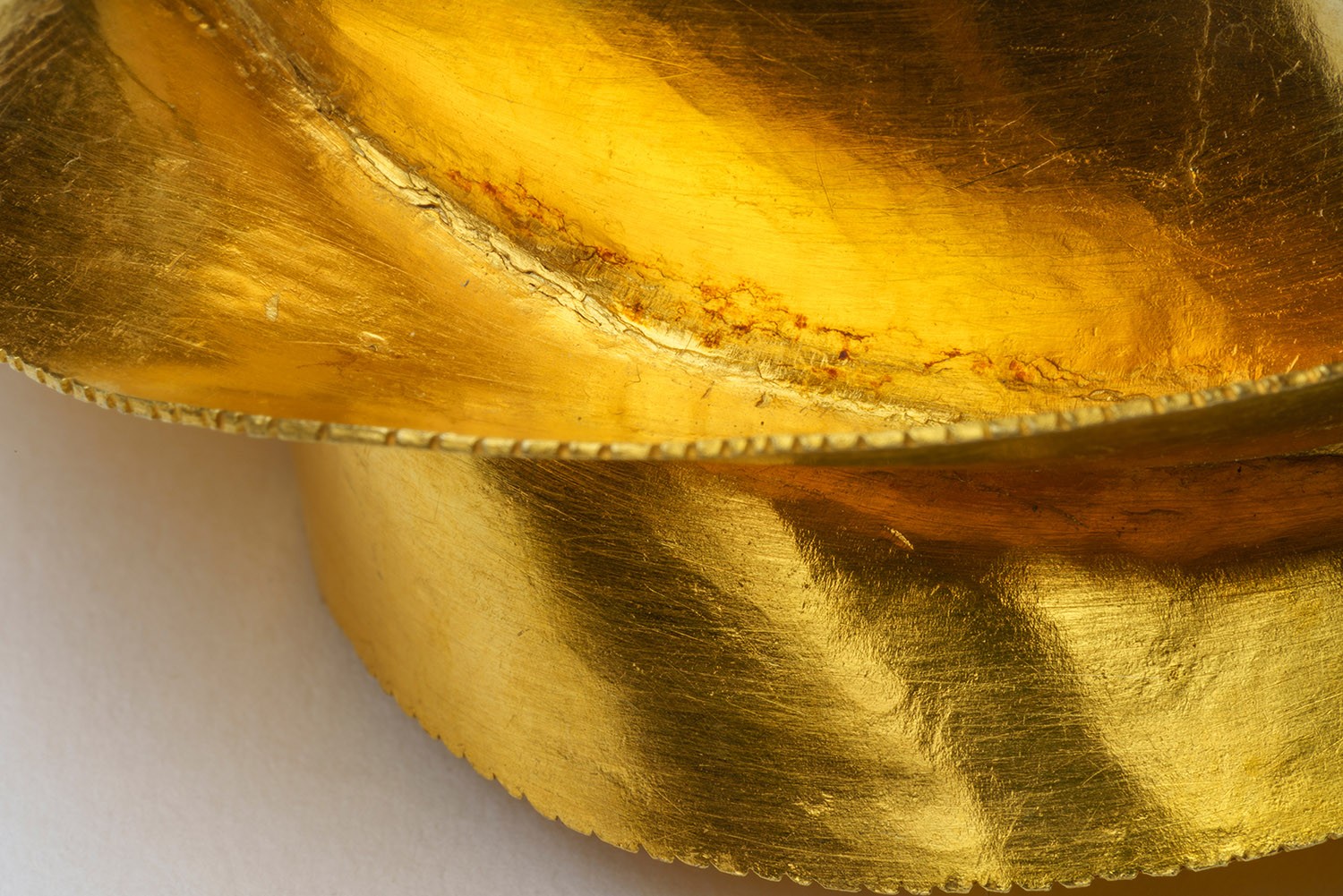 Earrings (detail). Gold. Peulh of Mali, West Africa. Purchased from Thomas Schunk, 1989. Collection Weltkulturen Museum. Photo: Wolfgang Günzel
Earrings (detail). Gold. Peulh of Mali, West Africa. Purchased from Thomas Schunk, 1989. Collection Weltkulturen Museum. Photo: Wolfgang Günzel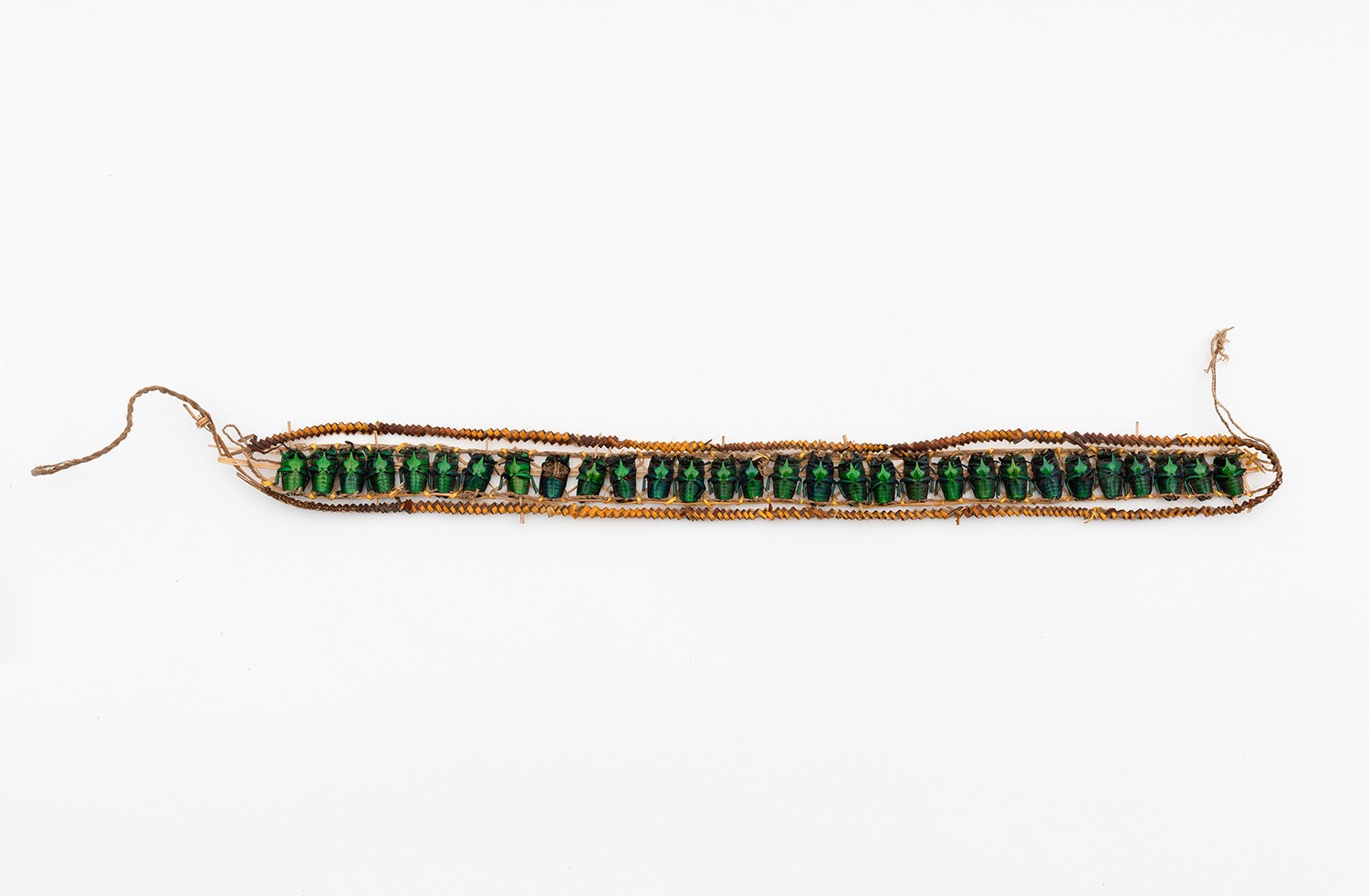 Headband. Plant material, rose beetles. Mount Hagen, New Guinea. Purchased from R. Diepen during the Sepik Expedition, 1961. Collection Weltkulturen Museum. Photo: Wolfgang Günzel
Headband. Plant material, rose beetles. Mount Hagen, New Guinea. Purchased from R. Diepen during the Sepik Expedition, 1961. Collection Weltkulturen Museum. Photo: Wolfgang Günzel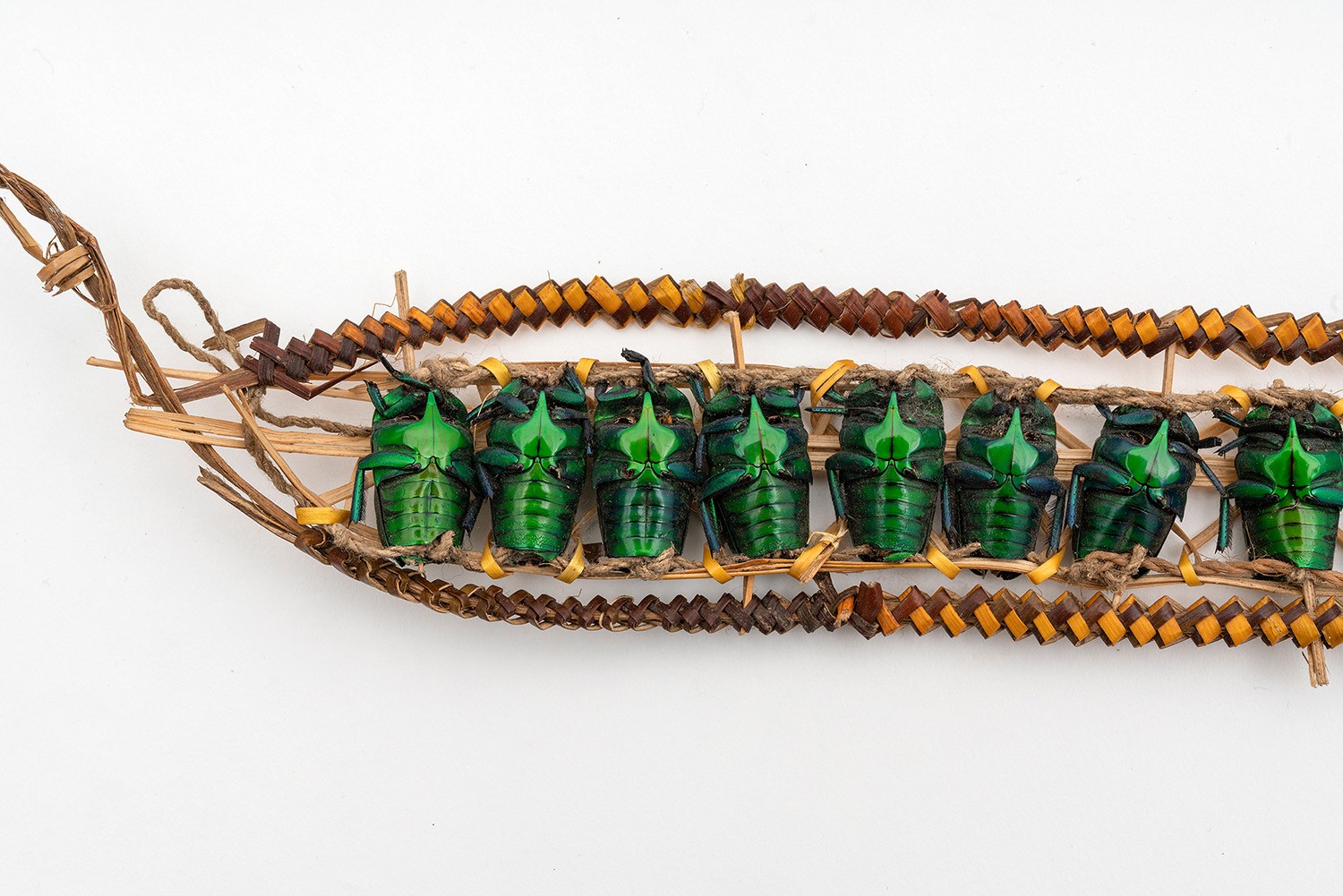 Headband. Plant material, rose beetles. Mount Hagen, New Guinea. Purchased from R. Diepen during the Sepik Expedition, 1961. Collection Weltkulturen Museum. Photo: Wolfgang Günzel
Headband. Plant material, rose beetles. Mount Hagen, New Guinea. Purchased from R. Diepen during the Sepik Expedition, 1961. Collection Weltkulturen Museum. Photo: Wolfgang Günzel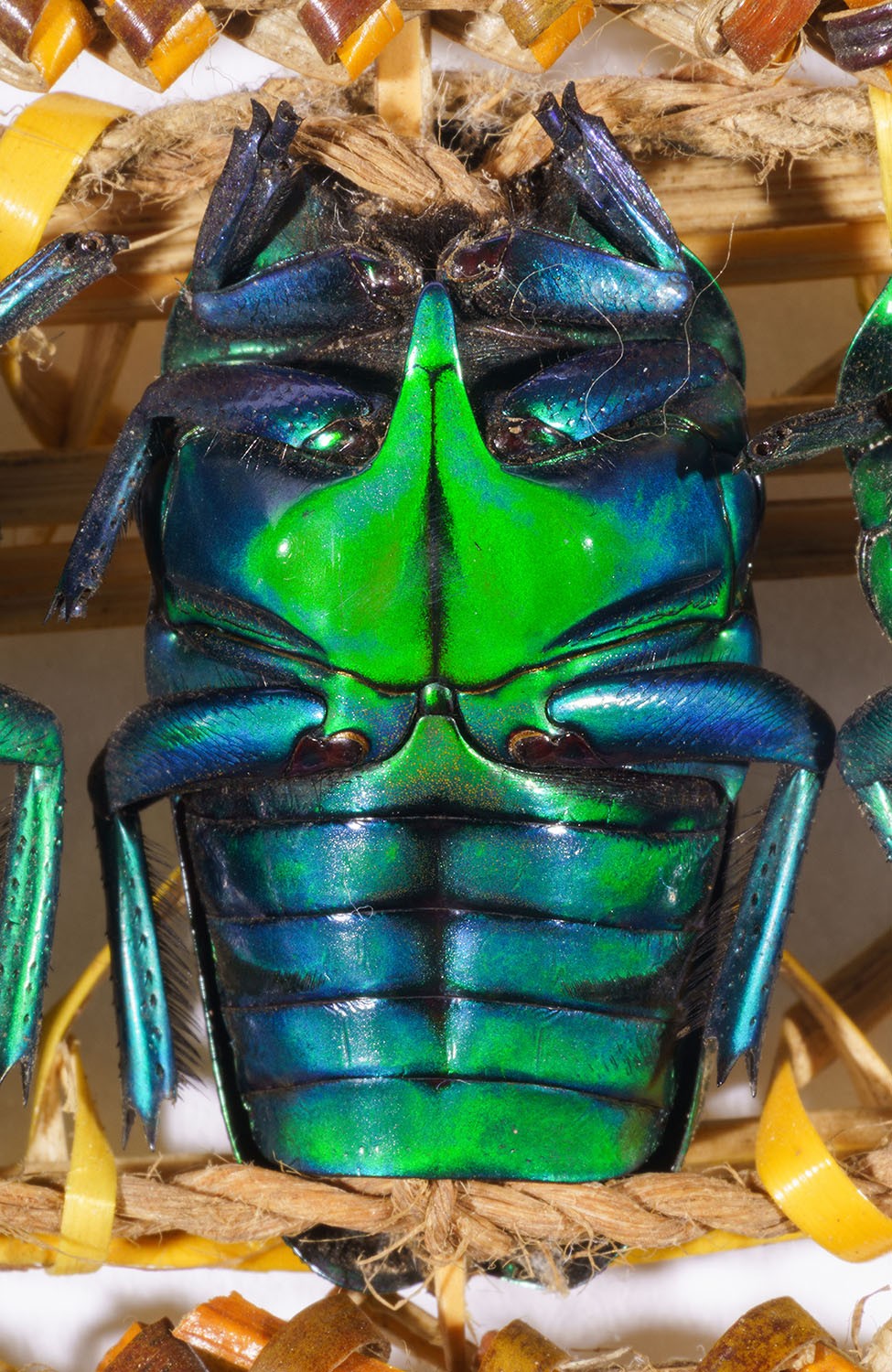 Headband. Plant material, jewel beetles. Mount Hagen, New Guinea. Purchased from R. Diepen during the Sepik Expedition, 1961. Collection Weltkulturen Museum. Photo: Wolfgang Günzel
Headband. Plant material, jewel beetles. Mount Hagen, New Guinea. Purchased from R. Diepen during the Sepik Expedition, 1961. Collection Weltkulturen Museum. Photo: Wolfgang Günzel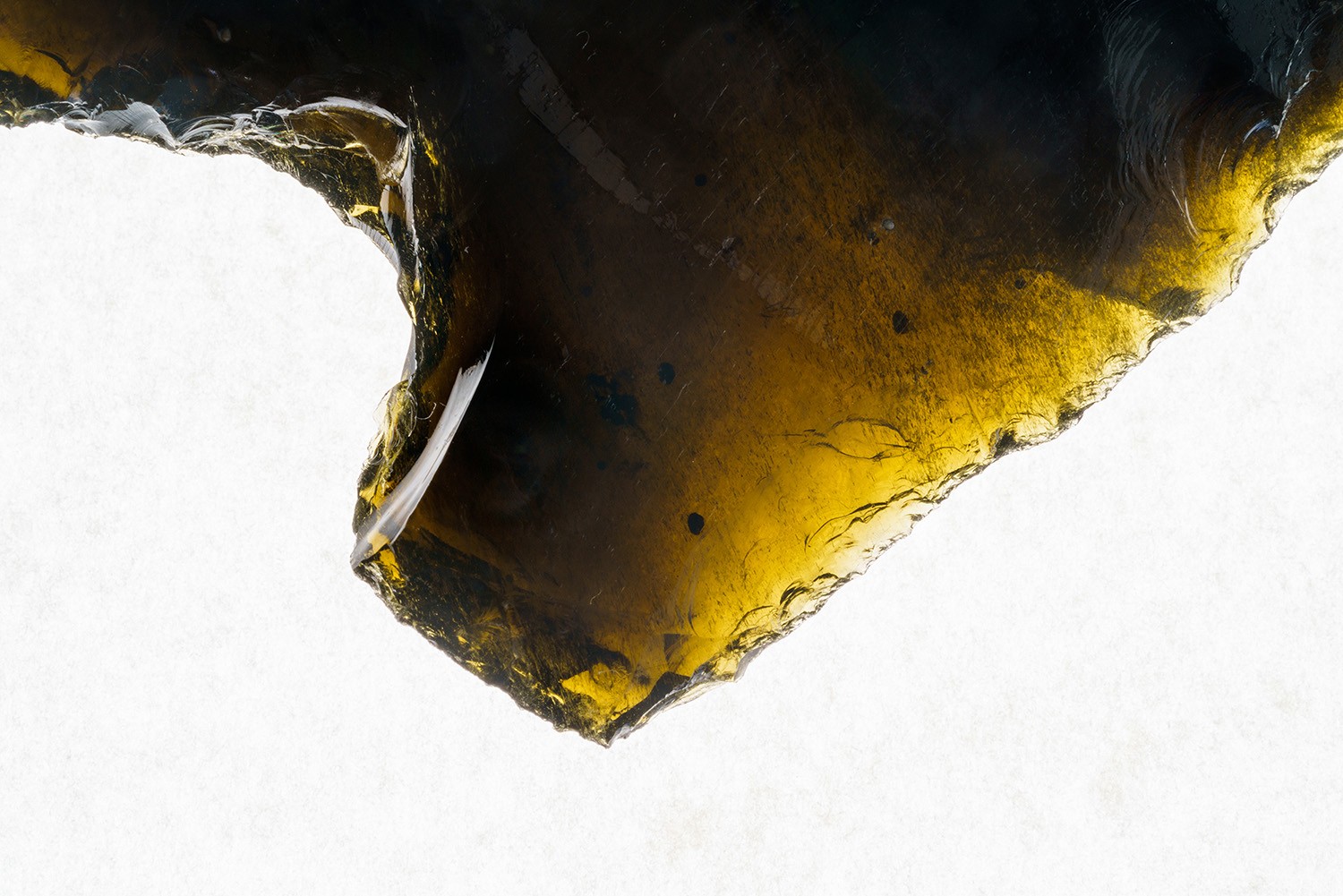 Obsidian blade. California, USA. Donation from Richard Mehlhorn, 2014. Collection Weltkulturen Museum. Photo: Wolfgang Günzel
Obsidian blade. California, USA. Donation from Richard Mehlhorn, 2014. Collection Weltkulturen Museum. Photo: Wolfgang Günzel
GREEN SKY, BLUE GRASS. Colour Coding Worlds
Our world is full of colour, but do all cultures see it in the same way? While the scientific basis for perception is identical for everyone, light waves can’t really explain how we name our impressions of colour, the number (and kind) of categories we divide these colours into, or the meanings and associations we ascribe to them. These can sometimes differ enormously depending on the language and culture involved.
It all means that colour is not necessarily universal. As an example, the meaning of the Japanese word ao is not identical to the English term blue. This is also the case with midori, which is quite distinct from green. Thus, Japanese poetry can absolutely describe a “green sky” and “blue grass” – the European way of seeing things is turned upside down.
With around 200 exhibits from the collections of the Weltkulturen Museum, including objects from New Guinea, Polynesia, the Amazon region, East Africa, Tibet and Java, the exhibition examines the wide range of contextual meanings for colour as a cultural phenomenon.
A central theme in this exhibition addresses the diverse cultural concepts associated with colour, because colour codes worlds: colours are often associated with manifold social and cosmological notions that help people find their way in the world, making sense of it and regulating how they live with each other. Exploring the meanings of the different understandings of colour means viewing cultural relationships in a new light, which in turn allows us to discover other worldviews.
- Accompanying publication
The exhibition will be accompanied by an in-depth catalogue called “Green Sky, Blue Grass”, which includes a lavish selection of visual material. The interdisciplinary articles in this publication examine the themes of the exhibition in greater detail and present thought-provoking ideas about colour as a cultural phenomenon.
Including scholarly contributions by Tomi Bartole, Eystein Dahl, Roger Erb, Frauke Gathof, Vanessa von Gliszczynski, Brigitta Hauser-Schäublin, Matthias Claudius Hofmann, Arno Holl, Eric Huntington, Olaf L. Müller, Eva Ch. Raabe, Gustaaf Verswijver as well as Chantal Courtois in conversation with René Fuerst.
The catalogue is published in German and English by Kerber Verlag.
- Curators
Head curator: Matthias Claudius Hofmann
Co-curators: Tomi Batole, Roger Erb, Vanessa von Gliszczynski, Arno Holl - Adress, Opening hours, Prices
Weltkulturen Museum
Schaumainkai 29
60594 Frankfurt am Main
€7 / reduced €3.50
Free admission for children and teenagers under the age of 18
Opening times: Wed.–Sun. 11am – 6 pm , Wed. 11 am – 8 pm - Safety Guidelines
- Please show one of the following proofs when entering the museum: Vaccination certificate (digital or vaccination card) or proof of recovery.
- Please keep a distance of at least 1.5 m in the entrance and at the counter.
- Protective masks are mandatory. Please cover mouth and nose. We sell simple protection masks at the counter.
- Please keep a security distance of at least 1.5 m from visitors and guards.
- Please sneeze and cough in the crook of your arm, wash or disinfect your hands regularly.
- People with acute illness must not visit the museum.
- Please use the marked separate exit.
You can find our events here.
